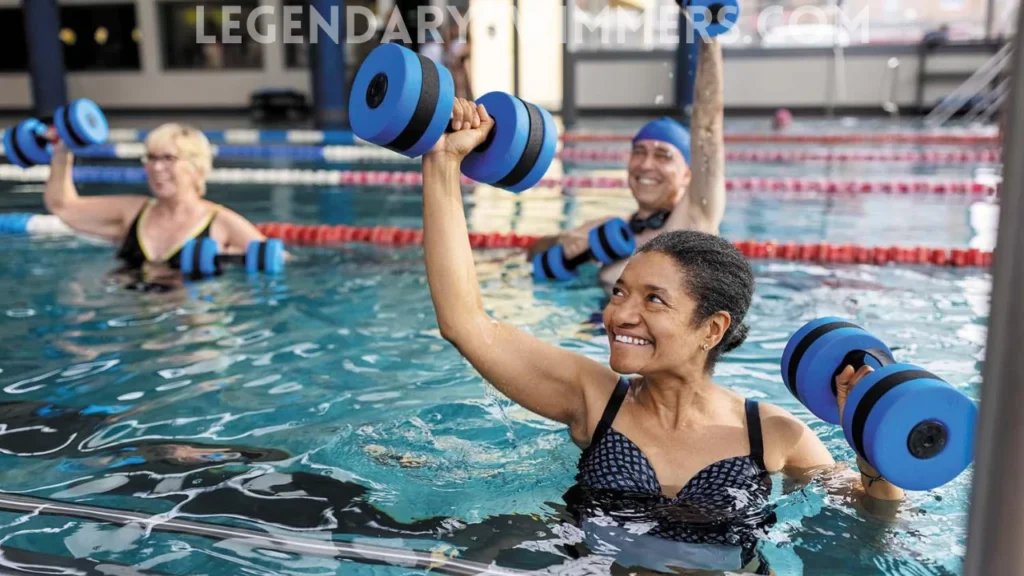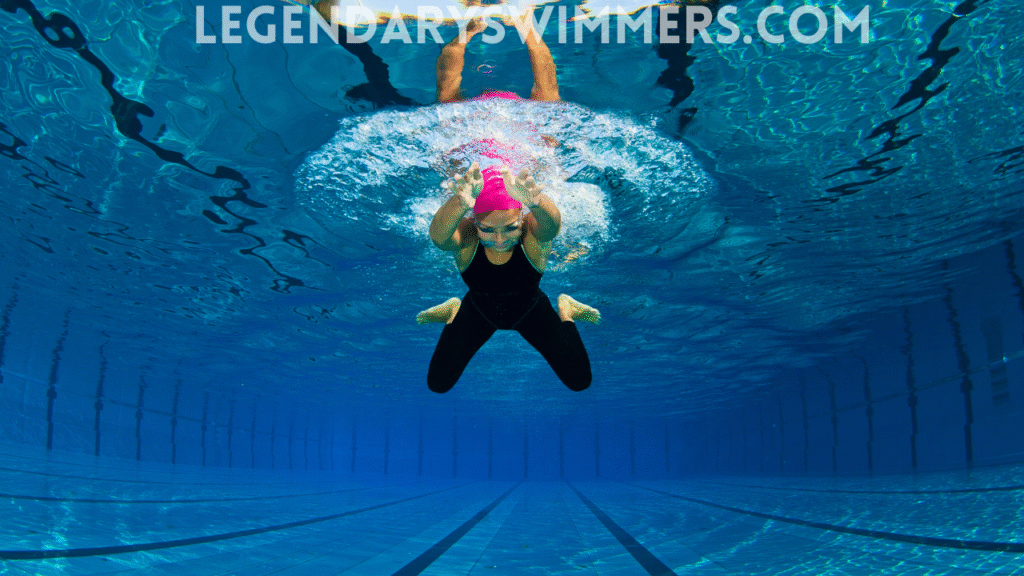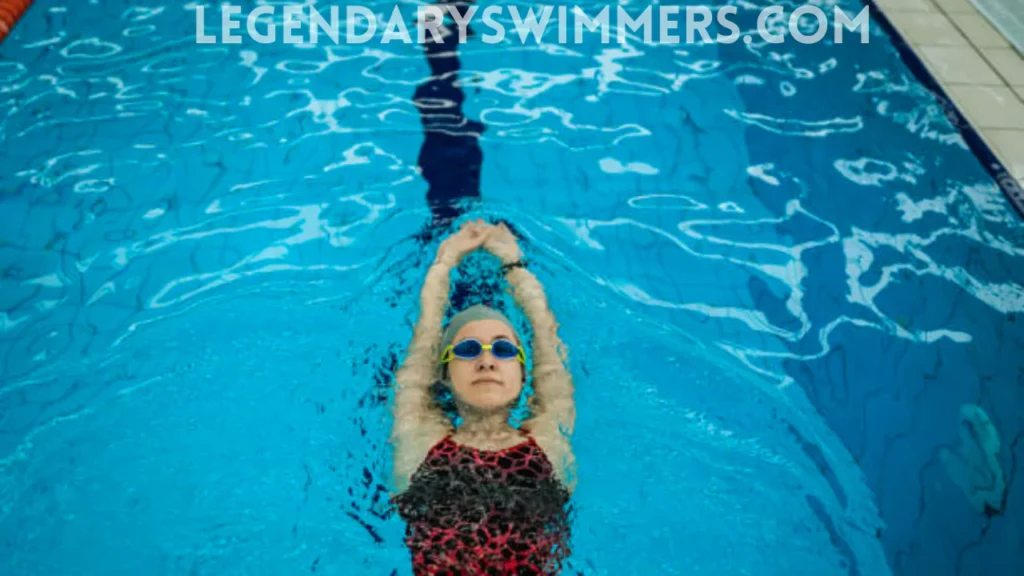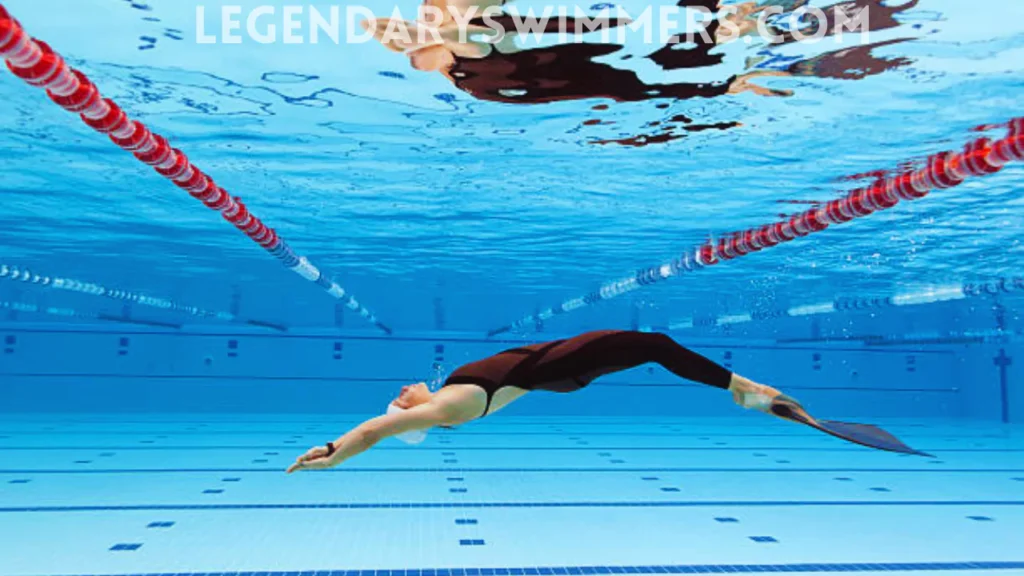
Swimming for Bone Health: Combat Osteoporosis with Water Exercise
- Updated:
As we age, our bones naturally lose density, and the risk of fractures increases. Osteoporosis, a condition where bones become fragile and more likely to break, is particularly common in women—especially those who are postmenopausal.
At Legendary Swimmers, we understand the challenges of managing bone health, and we recognize that maintaining a balanced, active lifestyle is key to keeping osteoporosis at bay. Swimming is a low-impact exercise that can play an essential role in strengthening muscles and bones while also minimizing the risk of joint strain.
In this detailed guide, we’ll explore how swimming can benefit women with osteoporosis, which swimming strokes are most effective, and how to integrate this activity into your daily life for long-term bone health. Whether you’re new to swimming or looking to refine your technique, our expert approach will give you the tools to confidently include swimming in your osteoporosis management strategy.
Why Swimming Is Ideal for Women with Osteoporosis
For women with osteoporosis, protecting your bones while staying active can be a challenge. One of the critical elements of managing osteoporosis is finding the right exercise routine that reduces the risk of falls and fractures, all while stimulating bone health. Weight-bearing activities, which apply force directly to your bones, are traditionally recommended for building bone strength. However, these can often be too harsh on the joints and muscles of women suffering from osteoporosis.
The Connection Between Bone Health and Swimming
This is where swimming stands out as an ideal exercise. While swimming may not apply as much direct load to bones as walking or running, the resistance of the water creates an environment where your muscles must work harder to move against the buoyancy. This helps to build muscle strength, which in turn supports bone health. For women with osteoporosis, the gentle impact and resistance in water help increase muscle tone without the risk of falling, unlike other forms of high-impact exercises.
Why Water Resistance Works for Bone Strength
The resistance offered by water is 12 times greater than air, making swimming an incredibly efficient workout. Every stroke, and every movement in the water helps activate your muscles and joints, promoting bone mineralization indirectly. Even though swimming doesn’t directly impact bone density in the way weight-bearing activities do, it offers valuable benefits for osteoporosis prevention and management by improving flexibility, stability, and overall strength, which helps reduce the likelihood of falls.
Moreover, swimming provides a full-body workout that engages your legs, arms, core, and back. As your muscles strengthen, they work synergistically to stabilize the skeletal system, effectively providing support to vulnerable bones.
The Science Behind Swimming and Bone Health
To understand why swimming benefits bone health, it’s important to delve into the science behind it. Osteoporosis occurs when bones lose density, resulting in weaker bones that can fracture more easily. For women, this process accelerates after menopause due to the decrease in estrogen levels, a hormone essential for bone health. Swimming, by engaging muscles through resistance training, helps stimulate bone cells to promote bone density maintenance.
While weight-bearing activities such as walking, running, and lifting weights directly apply stress to bones, swimming has the benefit of combining low-impact movements with water’s resistance. Research indicates that aquatic exercises, like swimming, offer benefits like reduced pain, improved joint mobility, and increased muscle mass—all of which are essential for managing osteoporosis.
Mechanisms of Strengthening Bones with Swimming
The repetitive motion of swimming increases the engagement of muscles around key areas such as the hips, spine, and wrists. These are the areas most commonly affected by osteoporosis, and strong muscles can better protect the bones by acting as a stabilizing force.
Balance and Stability: The water provides support for the body while simultaneously engaging muscles that contribute to balance and coordination. By enhancing balance, swimming lowers the risk of falls, which is a significant concern for individuals with osteoporosis.
Circulation Improvement: Regular swimming improves cardiovascular health and circulation. Proper blood flow is essential for bone health as it helps transport nutrients necessary for the regeneration of bone cells and tissue.
Supporting Research:
A 2019 study published in the Journal of Osteoporosis and Bone Research concluded that aquatic exercises, including swimming, improve muscle strength and joint flexibility in individuals with osteoporosis. The research showed that those who engaged in water-based workouts experienced an increase in muscle mass and improvement in bone density over a six-month period.
Which Swimming Strokes Are Most Effective for Bone Health?
Each swimming stroke engages different muscle groups. For women with osteoporosis, selecting the right strokes that target muscle groups surrounding vulnerable bones is essential. Below, we highlight the best strokes for maximizing bone health benefits:
| Stroke | Benefits |
|---|---|
| Backstroke | Engages back muscles, crucial for spinal stability. Strengthens muscles surrounding the spine, reducing osteoporosis-related fracture risks. Supports good posture. |
| Breaststroke | Strengthens chest, arms, and legs, supporting shoulders, spine, and hips. Gentle on the body, making it ideal for beginners. Improves flexibility and reduces injury risk. |
| Freestyle (Front Crawl) | Builds cardiovascular endurance and full-body strength. Targets arms, chest, and core muscles. A faster pace helps build muscle and joint strength. |
| Butterfly | Strengthens chest, shoulders, and arms. Suitable for advanced swimmers or those with higher fitness levels. ❗ Not recommended for beginners or those with significant osteoporosis due to its intensity. |
How to Design a Weekly Swimming Schedule
Creating a routine that integrates swimming with other bone-strengthening activities is essential for a well-rounded osteoporosis management plan. For optimal results, aim for at least 3-4 swimming sessions per week, each lasting 30 to 45 minutes. If you’re just starting, it’s okay to begin with 20-minute sessions and gradually increase the duration as your endurance and technique improve.
Effective Swimming Interval Training
For more advanced swimmers, incorporating interval training can further challenge muscles, boost strength, and improve cardiovascular health. Interval training in swimming involves alternating between fast-paced swimming and slower-paced recovery periods. For example, you might swim one lap at a faster pace, followed by one lap at a slower pace. This creates variation in intensity, which builds muscle strength and helps prevent osteoporosis-related bone loss.
Nutrition for Bone Health
To truly maximize the benefits of swimming, women must pair exercise with a diet that supports bone health. A balanced diet rich in calcium, vitamin D, and other essential nutrients is vital for maintaining strong bones. The National Osteoporosis Foundation recommends that individuals with osteoporosis maintain an adequate intake of calcium and vitamin D to slow bone loss. Here are the key nutrients to focus on:
Calcium: Calcium is the main mineral found in bones and is crucial for maintaining bone density. Women should aim to consume 1,200 mg of calcium daily, which can be found in foods like dairy products (milk, cheese, yogurt), leafy greens, almonds, and fortified plant-based milk.
Vitamin D: Vitamin D plays an essential role in calcium absorption. Without sufficient vitamin D, your body cannot effectively absorb calcium. Ensure you’re getting 600-800 IU of vitamin D per day through foods like fatty fish, fortified dairy, and egg yolks, along with moderate sun exposure.
Magnesium and Vitamin K: Magnesium supports bone structure, while vitamin K is vital for calcium regulation in the body. Foods like spinach, nuts, seeds, and whole grains are excellent sources of magnesium, while vitamin K can be found in green leafy vegetables like kale and broccoli.
Essential Swimming Gear for Osteoporosis-Friendly Workouts:
 Speedo Unisex-Adult Swim Cap Silicone Elastomeric – Protects hair while swimming.
Speedo Unisex-Adult Swim Cap Silicone Elastomeric – Protects hair while swimming.
 Speedo Women’s Swim Goggles Mirrored Vanquisher 2.0 – Ensures clear vision in water.
Speedo Women’s Swim Goggles Mirrored Vanquisher 2.0 – Ensures clear vision in water.
 Swimming Ear Plugs for Adults – Prevents water from entering the ears.
Swimming Ear Plugs for Adults – Prevents water from entering the ears.
FAQs
Q: Can swimming reverse the effects of osteoporosis?
While swimming is not a cure for osteoporosis, it can help manage symptoms by improving muscle strength and joint stability, which reduces the risk of fractures. Swimming should be part of a comprehensive osteoporosis management plan that includes weight-bearing activities, a healthy diet, and medical treatment.
Q: What are the best swimming strokes for bone health in women with osteoporosis?
The best strokes for women with osteoporosis include backstroke and breaststroke. These strokes are gentle on the body, help strengthen the spine and hips, and improve posture, which is essential for individuals with osteoporosis.
Q: How often should I swim for optimal bone health?
It’s recommended to swim 3-4 times a week for 30-45 minutes per session. This frequency provides consistent benefits for bone health while reducing the risk of osteoporosis-related fractures.
Conclusion
Swimming is a powerful, low-impact exercise that offers numerous benefits for women with osteoporosis. By incorporating swimming into your regular routine, alongside a bone-healthy diet and weight-bearing exercises, you can significantly improve your muscle strength, stability, and bone density. LegendarySwimmers.com is committed to helping women manage osteoporosis and stay active. Swimming offers a safe, effective way to improve bone health and reduce the risk of fractures. Start today—your bones will thank you for it!
References

Natasha Nicole Leyva
Hi, I’m Natasha—swimmer, coach, and aquatic fitness enthusiast. My journey began in New Zealand after a professor recommended swimming to help with a knee injury. The low-impact nature of swimming worked wonders, and it quickly became my favorite form of exercise. This passion grew into a thriving swim academy, and soon, requests for aquatic fitness classes started pouring in. After becoming certified, I realized how powerful water workouts could be for recovery and fitness. Now, I share my expertise here to help others experience the benefits of aquatic movement—whether for recovery, fitness, or fun!







